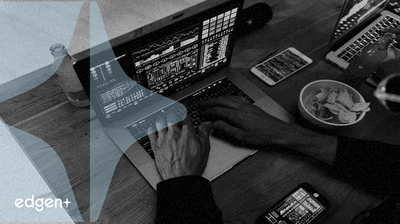Related News

Huobi HTX Intensifies Stablecoin Push with USDD Promotion and High-Yield Offerings
## Executive Summary Huobi HTX has launched the third iteration of a promotional event for the **USDD** stablecoin, deploying a **$50,000** prize pool and high-yield financial products to bolster the token's adoption and trading volume on its platform. The campaign offers an annual percentage yield (APY) of up to 10% on its "Yu'ebao" savings product and additional benefits for users trading **USDD**-margined contracts for the first time. This initiative is consistent with HTX's broader business strategy of utilizing significant prize pools and attractive yields to drive user engagement and capture market share in the highly competitive crypto exchange and stablecoin landscapes. ## The Event in Detail The promotional campaign is structured to incentivize both holding and trading **USDD**. The central features include: - A total prize pool of **$50,000** available to participants. - An enhanced interest rate on **USDD** held in the platform's Yu'ebao savings feature, offering up to a 10% APY. - Exclusive benefits aimed at onboarding new users to its **USDD**-margined derivatives market. This campaign runs parallel to other high-yield offerings from HTX, such as a separate promotion providing a 12% APY on flexible **USDD** deposits. These financial mechanics are designed to attract liquidity by providing returns that are competitive with or exceed those of other stablecoin strategies in the DeFi and centralized finance sectors. ## Broader Context and Business Strategy This **USDD**-focused event is not an isolated tactic but a component of a larger, ongoing marketing strategy by Huobi HTX. The exchange frequently launches large-scale promotional events to stimulate platform activity. For instance, it recently held a "Double 11 Carnival Month" with a **$280,000 USDT** prize pool for trading tokens like **$TRX**, **$SUN**, and **$JST**. Other events include a **$200,000 USDT** "Peak Competition" for traders and a **$20,000** prize pool for trading **$TRUMP**. This pattern of aggressive, capital-intensive promotion indicates a clear strategy to attract and retain a user base by consistently offering financial rewards. ## Market Implications The primary implication of this strategy is heightened competition among cryptocurrency exchanges. By increasing the financial attractiveness of holding and using **USDD**, Huobi HTX aims to draw capital and users away from rival platforms and their associated stablecoins. The promotion specifically encourages activity in both spot (savings) and derivatives (contracts), suggesting a goal of deepening liquidity across its platform. For the market, this reinforces a trend where exchanges act as primary drivers of adoption for affiliated or partner stablecoins through direct financial incentives. According to project documentation, **USDD** is positioned as a decentralized, over-collateralized stablecoin managed by the **USDD** and **JUST DAO**, a feature intended to appeal to users prioritizing on-chain transparency and security.

Institutional Crypto Strategies Diverge: Strategy's Bitcoin Holdings Show Profit While Bitmine and Forward Industries Post Major Altcoin Losses
## Executive Summary On November 21, 2025, market data revealed a stark divergence in the performance of corporate cryptocurrency treasury strategies. **Strategy**, a major corporate holder of **Bitcoin**, is maintaining a floating profit on its holdings. In contrast, **Bitmine Immersion Technologies (BMNR)** and **Forward Industries (FWDI)** are facing substantial unrealized losses on their significant investments in **Ethereum (ETH)** and **Solana (SOL)**, respectively. This highlights a potential flight to quality within the digital asset class, with **Bitcoin** demonstrating greater resilience than major altcoins during the market downturn. ## The Event in Detail According to data from Lookonchain, **Strategy's** extensive **Bitcoin** treasury, accumulated since 2020, is currently marked by a floating profit of 12.72%. This performance stands in sharp contrast to the positions of other notable corporate investors in the space. **Bitmine (BMNR)**, which holds approximately 3.6 million **ETH**, is contending with a floating loss of 31.67%. The firm’s total crypto and cash holdings were reported to have fallen from $14.2 billion in late October to $11.8 billion by mid-November 2025, reflecting the decline in **Ethereum's** market value. Similarly, **Forward Industries (FWDI)** is experiencing a 44.85% floating loss on its **Solana** treasury. The company had previously acquired approximately $1.34 billion worth of **SOL** at an average price of $232 per token. Its current holdings amount to 6.9 million **SOL**. ## Deconstructing Corporate Strategies This divergence underscores the distinct strategic approaches and risk exposures of these companies. **Strategy's** approach, championed by Executive Chairman **Michael Saylor**, is a long-term conviction play on **Bitcoin** as a primary treasury reserve asset. **Saylor** has publicly stated that volatility is an expected component of this strategy. While the overall position is profitable, reports from earlier in the month noted that recent price moves had put approximately 40% of the company's 649,870 **BTC** holdings into an unrealized loss position, illustrating the very volatility **Saylor** references. **Forward Industries** has pursued a dual-pronged strategy. Alongside its significant **SOL** accumulation, the company announced a $1 billion share repurchase program. This signals confidence in its own stock (**FWDI**) and can be interpreted as a defensive maneuver to create shareholder value amidst the high volatility of its crypto holdings. This action suggests the firm is hedging against further market deterioration. **Bitmine's** significant floating loss on **ETH** highlights the heightened risk profile of altcoin-centric treasury strategies compared to a **Bitcoin**-focused approach in the current market climate. ## Market Implications The current situation has several potential implications for the broader market. The significant losses on **ETH** and **SOL** could trigger increased selling pressure if firms like **Bitmine** and **Forward Industries** decide to de-risk their balance sheets. Furthermore, this event serves as a critical case study for other corporations considering adding digital assets to their treasuries. The relative stability of **Strategy's** **Bitcoin** position compared to the substantial losses in top altcoins may encourage a more conservative, **Bitcoin**-first approach to corporate adoption. ## Broader Context The divergent outcomes of these corporate treasury strategies highlight the inherent risks and volatility within the digital asset market. As disclosed in **Forward Industries'** own filings, the price of a company's common stock can become highly correlated to the price of the digital assets it holds. The current environment reinforces the high-risk, high-reward nature of corporate crypto investments. As **Michael Saylor** commented in a recent interview regarding **Bitcoin's** price movements, "The volatility comes with the territory," a sentiment that now serves as a cautionary note for the entire sector.

Changpeng Zhao's Personal ASTER Investment Triggers 30% Rally Amid Privacy-Focused Layer-1 Launch
## The Event in Detail The price of the **ASTER** token surged by over 30% following a public disclosure by **Binance** founder Changpeng Zhao (CZ) regarding his personal holdings. CZ revealed that he had purchased approximately 2.09 million **ASTER** tokens, a position valued between $2 million and $2.5 million, which he described as a long-term investment. This announcement triggered an immediate wave of speculative buying from market participants, causing a significant and rapid increase in the token's value. ## Aster's Strategic Pivot The investment has cast a spotlight on Aster's broader corporate strategy, which centers on the development of an institutional-grade decentralized finance (DeFi) ecosystem. The core of this strategy is the upcoming **Aster Chain**, a proprietary Layer-1 blockchain currently in its internal testing phase. The network is purpose-built to address privacy and compliance challenges within the on-chain derivatives market. To achieve this, **Aster Chain** will implement **Zero-Knowledge (ZK) proofs**, a cryptographic method that allows for the verification of transactions without revealing underlying sensitive data, such as order sizes or profit and loss details. This technical focus on privacy and compliance positions **Aster** distinctly from competitors like **Hyperliquid**, which prioritize speed and transparency. The company aims to become an integrated trading infrastructure provider rather than solely a decentralized exchange protocol. ## Broader Market Context Aster's development of a privacy-enabled Layer-1 blockchain aligns with a significant trend in the digital asset space: the migration of the derivatives market on-chain. This market, with an estimated value of $2 trillion, is increasingly seeing perpetual futures and other complex financial instruments managed directly on blockchains. By building a network tailored for institutional needs—specifically privacy and regulatory adherence—**Aster** is positioning itself to capture a segment of this high-value market. The success of **Aster Chain**, which is anticipated to enter its testnet phase by early 2026, could serve as a key benchmark for the viability of privacy-preserving technologies in institutional DeFi.
